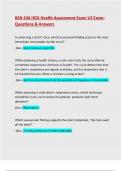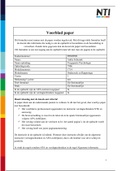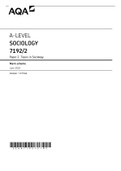Summary
Samenvatting Journalistieke vaardigheden tekst tentamenstof
- Course
- Institution
De tentamenstof van journalistieke vaardigheden tekst op de Vrije Universiteit Amsterdam. Let op! Het vak is vanaf veranderd wat betreft de stof en planning en er is een heleboel geschrapt, dus het kan zijn dat dingen niet overeen komen. In deze samenvatting staat: - Inleiding & H1 Kovach & ...
[Show more]












